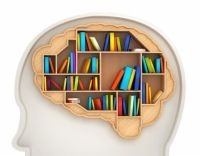Developing good study skills is critically important. You spend so much of childhood learning stuff, and being tested and quizzed and evaluated on what you've learned. Because of this, one of the most important subjects in education should be how to study, but it’s rarely taught. How well you study can make a huge difference in your success, so it’s worth spending a little time getting the principles right.
Follow these six simple steps and you’ll find it much easier to study — and you’ll retain much more information, making the whole process less onerous. You might even come to enjoy studying!

Make room, mentally and physically, for studying. Usually you’re studying for something specific, such as an exam. This can seem daunting, like a mountain to climb. If this sounds familiar, take a deep breath and pause for a moment before you start.
Think of how you make yourself comfortable when you do something you really enjoy, like watching a favorite television program. How do you settle in for the show? Do you sprawl or curl up? Do you have favourite relaxing clothes? Do you choose a particular drink or something to nibble? Borrow all these favorite things to make your studying a better experience. If you’re in a good space physically, you can improve your mental space.

Place
Create your own personal work zone. It doesn’t have to look like a work-space — that’s what many students find off-putting. Building on what you did in the previous paragraph, make the place your own and somewhere you enjoy.

Pace
Find the right pace for your work. Sprinters work hard and fast in a burst of energy while marathon runners spread the load and build slowly towards the climax. There’s no right or wrong way to pace your studying, except what works for you. Notice the way you like to work, and adjust your pace accordingly. (Just remember, if you study at a slow pace, you'll need to set aside more time for the task.)

Memory
It helps to know how your memory works. Here is the key to memory: in any sequence, people remember the first and last things best. Whatever you try to remember, you’ll find yourself recalling the beginning and the end, with less clear memories of the middle. You can’t change this — it’s wired in, it's how our brains work — so don’t fight it. Instead, use this fact to your advantage by organizing your study so the most important bits are at the beginning and end of your sessions.

Method
It’s always good to have a plan. However big or complex your task may look at first sight, with a feasible plan you can always find a way to manage it.

Mind maps
A mind map is rough diagram that you can make to visually outline information. You can create a mind map by starting with the primary word or phrase of a topic in the center, with related, lesser categories branching out from it. Subcategories of these are on smaller branches, still. Your categories can consist of anything you think is important; they can be important terms, ideas, or tasks to complete — whatever you need to help you study or organize the information.



